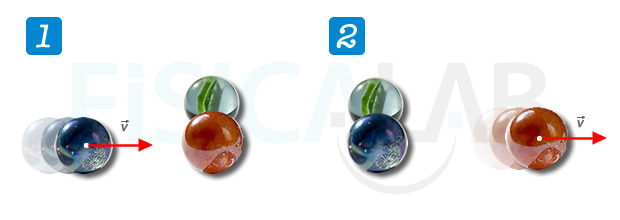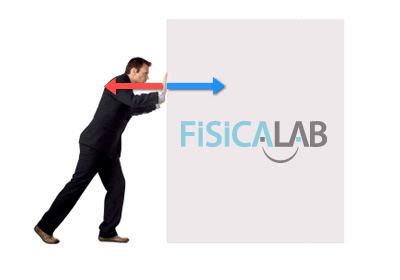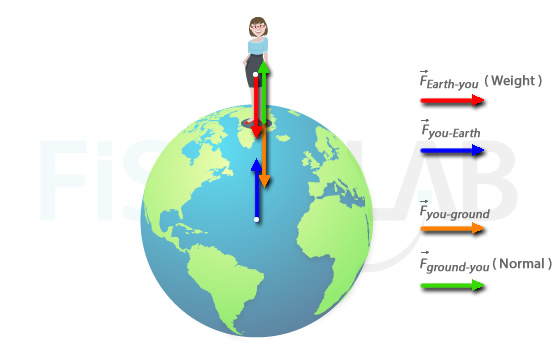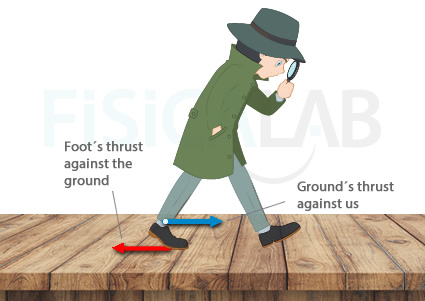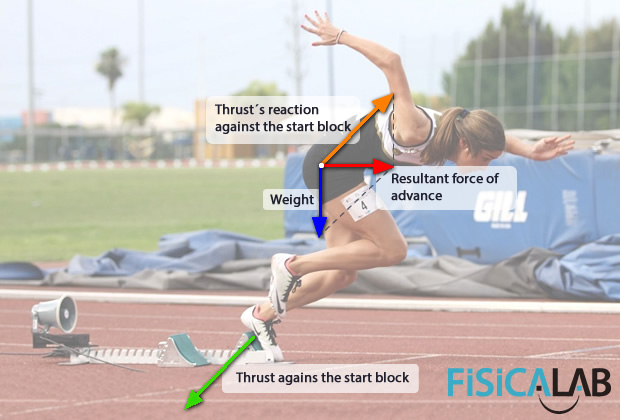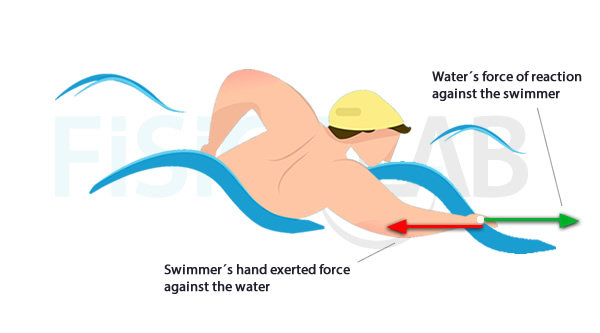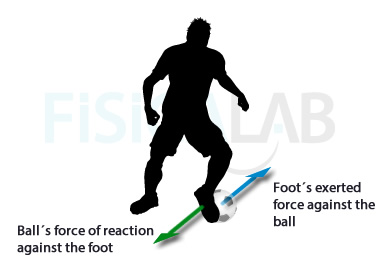The english physicist, mathematician and astronomer Sir Isaac Newton (1642-1727), basen on the studies of Galileo and Descartes, published in 1684 the first great work in Physics: Philosophiæ Naturalis Principia Mathematica, also known as Principia. In the first of the three parts in which the work is divided, he exposes in three laws of motion the relations between forces and their dynamic effects: the laws of motion.
- Newton´s first law or inertia principle
- Newton´s second law or law of force and acceleration
- Newton´s third law or law of action and reaction
Newton´s third Law or action and reaction principle establishes that for every action force, there is an equal and opposite reaction force. We will go in deph through the following three points:
Shall we start?
Concept
Imagine several marbles, all of them with the same mass. When you throw a marble against another, probably the first one will stop and the second one will get a very similar velocity than the first marble had.
From this simple example, you can verify that, for both marbles to modify their velocity have had to go through to forces. Since we can suppose marbles are isolated (they don´t interact with any other element), forces have only appeared during the blow. It seems a force over the hit marble has appeared during this action, which makes it set in motion. Therefore, it seems clearly that, since the "hitting" marble stops, it must experiment a reaction with a similar force but opposite direction.
We can now give a definition for Newton´s third law.
Definition
When a body A exert a force on another body B. B will react exerting another force on A with equal magnitude and opposite direction. The first of the forces recieves the name of action force and the second reaction force where:
Some important observations are that:
- Action and reaction forces have an equal and opposite direction so... why don´t they cancel each other?
-
These forces don´t cancel each other because they are applied on different bodies.
- An exception to the previous point is the case we find when we study the two bodies as one (the particles making a rigid body, for example). In this situation they would cancel each other, indeed.
- The principle is applicable not only to contact interactions, but to distance forces also. For instance, the Sun, due to its mass, exert an attraction force on Earth, but that also applies an attraction force on the Sun of equal (in size) and opposite direction. Then... why does the Earth orbit around the Sun and not the other way around? The truth is that actually, both orbit around a common point: the center of mass of the two of them. Because the mass of the Sun is bigger than the Earth´s mass, this point in inside the Sun, and the only perceptible orbit is our orbit turning around the Sun.
- The previous example also emphasizes that equal forces don´t imply equal effects. So, the effect of the force on Earth is much clearer than on the Sun.
- The principle assumes that forces occur simultaneously and are spread instantly. This is not easy to refut in the contact interactions. In the case of electromagnetic interaction, or even gravitatory, Einstein´s general relativity theory marks the maximum speed the interactions can be transmitted. This opened up a new horizon in the study of the dynamic that took to redifine some of the concepts we have introduced... but this is a long story that, for the moment, is far from the range of this level.
A couple consists of two parallel forces that are equal in magnitude, opposite in sense and do not share a line of action.
Applications
Your day to day is full of examples where you use the action-reaction principle to get on well in your environment. In the subject Newton´s law applications we will study many of these examples, we start here with some of them, though:
Standing up
When you are standing up, the Earth applies an attraction over you, but... why don´t you sink? Due to the reaction of the ground. It has equal value and opposite direction. As it is reflected on the following figure, we can distinguish:
Walk
When you walk, and thanks to the frictional force, you "propel the Earth backwards". The reaction of the Earth on your feet is to propel them forward.
Run
In the starting line the athletes use the track to propel themselves. They do it by exerting a force against the track, so the reaction of it gives them the drive desired.
Swim
On the same way, when you swim you move the water backwards, because of this, the water pushes you forward. When you get to the end of the pool and you want to turn around, you will probably propel yourself hard with your feet against the wall. The reaction of the wall on your feet is what let you to "gather momentum".
To kick a ball
When you play football and kick the ball, it´s the force on the ball the one that makes the ball to be shot off. This, at the same time, exert a reaction force on your foot that it will make the foot to go backwads from the impact spot.


